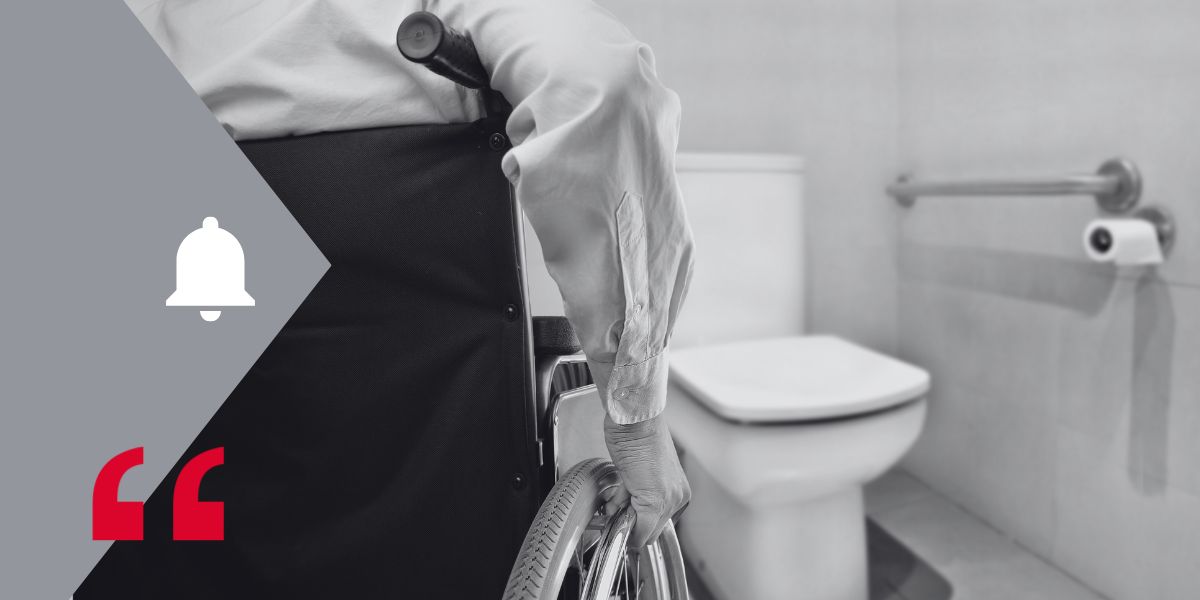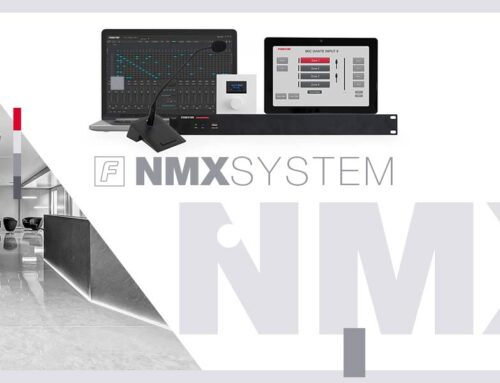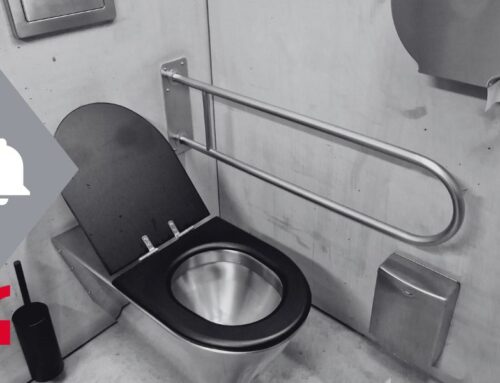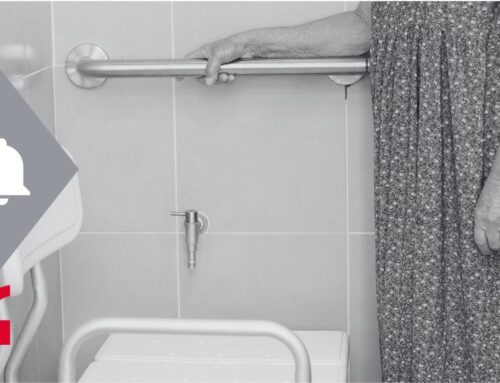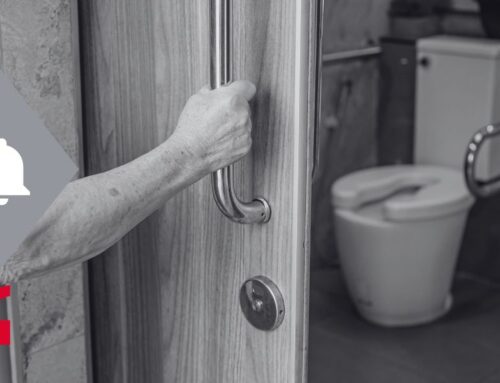The installation of an emergency button for disabled bathrooms is a fundamental aspect to ensure the safety and autonomy of people with reduced mobility. These systems allow users to request help in case of an emergency, thus improving accessibility and complying with the accessibility regulations in Spain. In this article, we will explore how to install these devices.
Steps for installing the emergency button in accessible bathrooms
1. Environment assessment and planning
The first step in the installation process of the emergency button for disabled bathrooms is to conduct a detailed assessment of the accessible bathroom environment. It is essential to identify the areas where assistance is most likely needed, such as near the toilet, shower, or bathtub. Additionally, the access routes to the bathroom and the locations of other assistive devices, such as support bars, should be considered.
During this phase, it is also important to review the accessibility regulations in Spain to ensure that the installation of the emergency button for disabled bathrooms complies with all legal requirements. This may include the height of the button, its proximity to other bathroom elements, and the specific features of the device to be installed.
2. Determining the location of the button
The location of the emergency button for disabled bathrooms is a crucial factor for its effectiveness. It is recommended to install the button in a position that is easily accessible from a seated or floor position. This means it should be within reach of a person who may have fallen or is using the toilet.
Typically, the emergency button for disabled bathrooms is installed at a height between 85 cm and 100 cm from the floor. However, if the bathroom is intended for users with specific needs, this height may need to be adjusted.
3. Preparing the area for installation
Once the location is selected, the area must be prepared for the installation of the emergency button for disabled bathrooms. This includes ensuring that the wall where the button will be installed is strong enough to support the device. If the bathroom is under construction or renovation, it is advisable to plan the installation of the wiring and conduits before finishing the walls and coverings.
For installations in already finished bathrooms, it may be necessary to drill holes in the wall to install the emergency button for disabled bathrooms and the corresponding wiring. Care must be taken to avoid damaging other existing installations, such as water pipes or electrical cables.
4. Installing the button
With the area prepared, proceed to the installation of the emergency button for disabled bathrooms. It should be firmly mounted on the wall using the mounting accessories. It is important to follow the manufacturer’s instructions to ensure a safe and durable installation.
Additionally, the alarm pull cord for disabled bathrooms should be easy to operate, even for users with physical limitations or reduced strength.
5. Connecting the button to the control unit
The next step is to connect the emergency button for disabled bathrooms to the control unit of the assistance call system. This unit is responsible for managing the signals and activating the corresponding alarms. The connection can be made via wiring or wirelessly, depending on the system and the manufacturer’s specifications.
In the case of a wired connection, it is important to ensure that the cables are well-protected and hidden to avoid accidental damage or interference. If the connection is wireless, it should be checked that the signal is strong and stable at all times and that there is no interference with other electronic devices in the building.
6. System configuration and testing
Once the physical installation is complete, the system must be configured according to the manufacturer’s instructions.
After configuration, a thorough test of the system should be carried out to ensure that everything works correctly. This test should include activating the emergency button for disabled bathrooms from all critical locations, verifying the signal at the control unit, and confirming that the visual and audible alarms activate as expected.
It is recommended that the tests be carried out by both the installer and the building maintenance staff. Additionally, these tests should be repeated periodically to ensure that the emergency button for disabled bathrooms remains in good working condition.
7. Maintenance and periodic inspections
Once installed, the emergency button for disabled bathrooms requires regular maintenance to ensure its continuous operation. This includes periodic inspections of components, functionality tests, and replacement of worn or damaged parts. Particular attention should be paid to the button’s battery (if wireless) and the integrity of the cables in wired installations.
Moreover, it is advisable that the maintenance staff is trained in the operation and inspection of the system. This ensures that any problems can be quickly detected and resolved, minimizing the risk of the emergency button for disabled bathrooms failing when most needed.
CALL-HELP and CALL-CENTRAL by Fonestar
Fonestar offers innovative and easy-to-install solutions for assistance calls in accessible bathrooms, such as CALL-HELP and CALL-CENTRAL. These devices are designed to be easily installed using Euroblock connectors, which are detachable terminals that allow for quick and secure cable connections, making it possible to work with cables from 0.2 to 1.5 mm² in section. This feature greatly facilitates installation, ensuring secure and durable connections without the need for complex tools.
The CALL-HELP is an ideal emergency button for use in disabled bathrooms, while the CALL-CENTRAL acts as a control unit, receiving the button signals and activating the corresponding alarms. The combination of these two devices ensures an efficient and reliable assistance call system, complying with accessibility regulations in Spain.
Conclusion
The installation of an emergency button for disabled bathrooms in accessible toilets is an essential measure to ensure the safety of people with reduced mobility. By following the proper steps and complying with the accessibility regulations in Spain, it can be ensured that these systems function effectively, providing peace of mind to both users and building maintenance staff.
